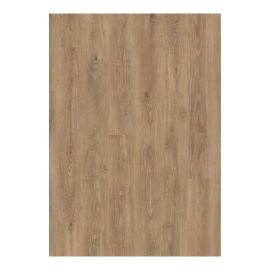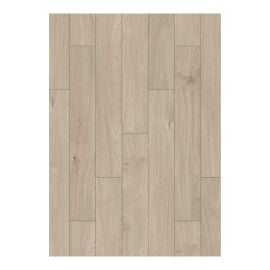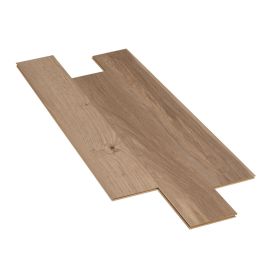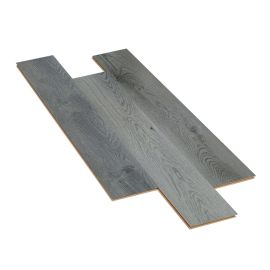Laminate flooring—also called “floating flooring”—is now recognized as an affordable alternative to hardwood flooring. It comes in a variety of colours and finishes and is highly resistant to scratches and stains. Here’s how to choose the right laminate flooring..
Why choose laminate flooring
- Different quality grades to suit all budgets
- Wide range of colours and finishes, for easy matching
- Resistant to scratches, stains and fading
- Easy to install
- Most manufacturers offer warranties of up to 35 years (see your local BMR for details)
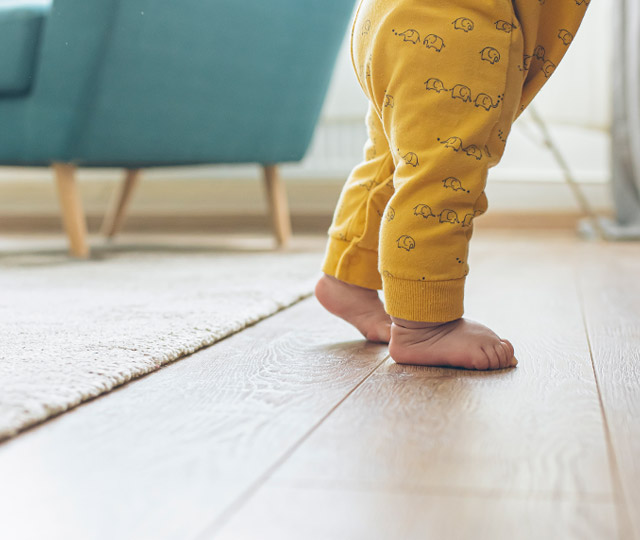

Laminate flooring composition
Laminate flooring is made up of four layers: a protective layer (A), a decorative layer (B), a core layer (made of fibreboard - C) and a base layer (D). It is usually made of melamine and has a high-density fibre (HDF) core, which makes it more durable. It is available in several imitation-wood finishes.
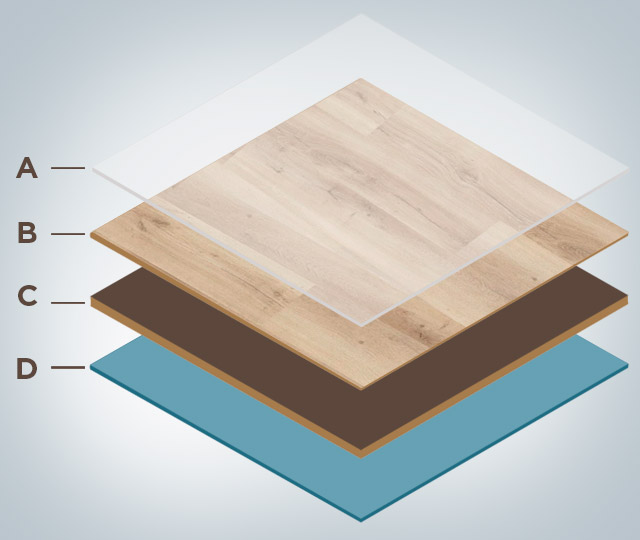

Laminate flooring thickness
Laminate flooring is available in different thicknesses: 8, 10, 12 and 14 mm.
Each thickness meets different requirements in terms of cost and performance.
Durability and resistance
Thicker laminate floors are generally more stable. They are less likely to warp when exposed to water and are more resistant to scratches (think high-traffic areas).
Soundproofing
Thick laminate flooring also provides better sound insulation by absorbing more sound as it travels between floors.
For large or high-traffic areas, choose thicker flooring.
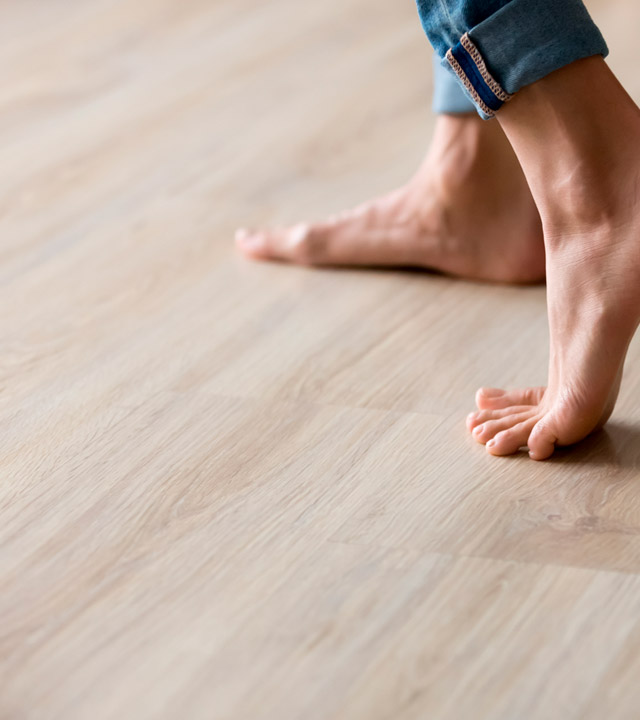
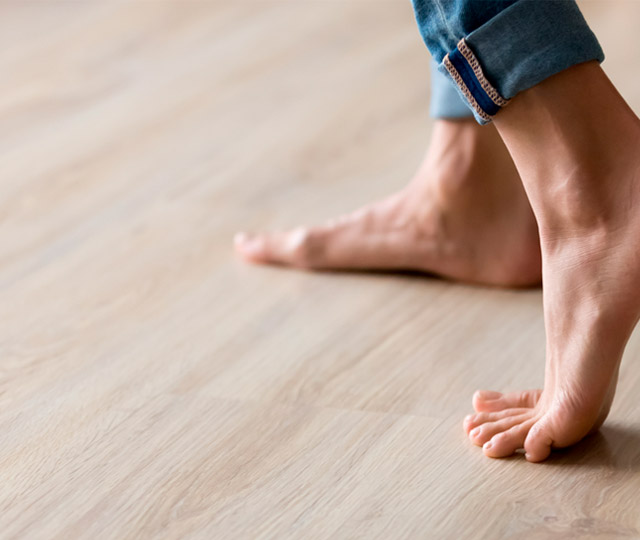
Laminate flooring quality
The AC (Abrasion Class) rating for laminate flooring ranks wear resistance on a scale of 1 to 5, with AC5 flooring being the most durable. For standard residential spaces, laminate flooring with an AC3 or AC4 rating is usually recommended, as it offers a good balance between cost and durability. For commercial spaces, an AC4 or AC5 rating is best, as this means the flooring is designed to withstand heavier traffic. AC1 and AC2 flooring should be reserved for very light-traffic areas or for use as an interior wall covering.
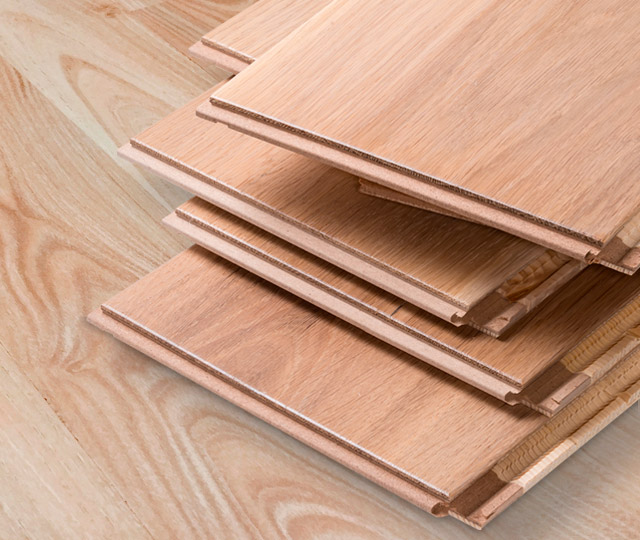

Where to install floating laminate flooring
Highly water-resistant laminate flooring is now available and can be installed in areas that are more likely to be exposed to water. So you can have laminate flooring in living rooms, bedrooms, offices and hallways, as well as in kitchens and basements. However, it’s best to avoid installing it in bathrooms and lobbies, as even the most resistant laminate flooring can be damaged by standing water. And since some grades are less resistant than others, you need to choose your flooring carefully based on how and where it will be used.
 |
 |
 |
|
Living room Bedroom Office Hallway Basement |
Kitchen |
Entryway Bathroom |
Ready to choose your laminate flooring? Browse our most popular laminate flooring options online or stop by your local BMR for more advice.
En savoir plus sur le plancher stratifié


Installer son plancher flottant
Lorem ipsum dolor sit amet, consectetur adipiscing elit. Morbi sed ligula lacinia, pellentesque lacus vel, ornare ipsum. Nam quis rutrum arcu.


Changer une planche de plancher flottant
Lorem ipsum dolor sit amet, consectetur adipiscing elit. Morbi sed ligula lacinia, pellentesque lacus vel, ornare ipsum. Nam quis rutrum arcu.


Entretenir son plancher stratifié
Lorem ipsum dolor sit amet, consectetur adipiscing elit. Morbi sed ligula lacinia, pellentesque lacus vel, ornare ipsum. Nam quis rutrum arcu.
Popular choices
Shop by category
The information in this article is intended as a guide only and may not apply to specific situations or cases. When in doubt, contact a BMR expert in your area.



